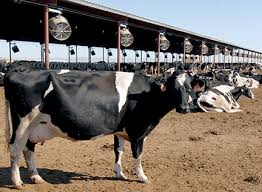National dairy herd up 11%
THE national dairy herd grew by 11,3 percent from 47 845 in 2021 to 53 250 in 2022 as
Zimbabwe thrives to boost its milk output in line with the import substitution drive.
The dairy industry plays a critical role in the Zimbabwean economy through its positive
exploitation of the forward and backward linkages between the agricultural and
manufacturing sectors.
Value chain players in the sector include input suppliers, milk producers, transporters,
processors, wholesalers, retailers, and regulators, among other service providers.
The growth in the number of dairy cattle has resulted in a steady increase in annual milk
production, a Crop, Livestock and Fisheries Assessment Report (Pre-harvest) CLAFA-1
2022/23 Summer Season report indicates.
“Total dairy herd continued in a positive trend recording an 11,3 percent growth from 47
845 in 2021 to 53 250 dairy animals in 2022.
“This has resulted in a steady increase in annual milk production. The milking herd grew
to 35 100 cows (milking and dry cows) producing 91,4 million litres of milk,” reads part
of the report.
It further notes that the number of registered dairy entities increased from 238 in 2021 to
244 in 2022. In 2022, milk production levels opened the year at 7,3 million litres, a 14
percent increase from the corresponding period of 6,4 million litres in 2021.
Despite a slight dip in February to 6,7 million litres, production peaked and closed
December at 8,3 million litres.
There are 36 smallholder milk collection centres (MCCs) around the country of which 24
are operational, four are under construction and eight have been closed because of low
milk volumes.
The assessment revealed that the good rain season has increased river flow rates, water
levels and reservoirs. That has resulted in good and improved availability of graze.
“Drinking water for livestock was sufficient at the time of assessment with trekking
distance for livestock in most areas being less than 1km. Poor soil conservation practices
continue to affect the water-holding capacity of water sources as a result of siltation and
this will affect livestock as the season progresses and water sources quickly get
depleted,” reads the report.
Dendairy
On livestock dipping situations, it indicates that cattle dipping has greatly improved with
all farmers sampled reporting that they are dipping their cattle. It noted that 68 percent
of the wards reported dipping to be adequate to cater for dipping at least once per week
while 32 percent reported inadequate dipping.
Cattle dipping
Regular cattle dipping has greatly reduced the number of tick-borne diseases, especially
Theileriosis (January disease). However, small ruminant dipping (sheep and goats) is not
a common practice by many farmers.
Cattle mortality decreased by three percent from nine percent in 2021 to six percent in
- Different animal diseases were the major causes of beef cattle mortalities
accounting for 83 percent of deaths from sampled beef cattle owners.
“The decreased cattle mortalities are attributed to improved animal health management
especially control of tick-borne diseases in hotspot areas with improved dipping regime
and introduction of the intensive 5-5-4 dipping cycle,” reads the report.-The Chronicle











